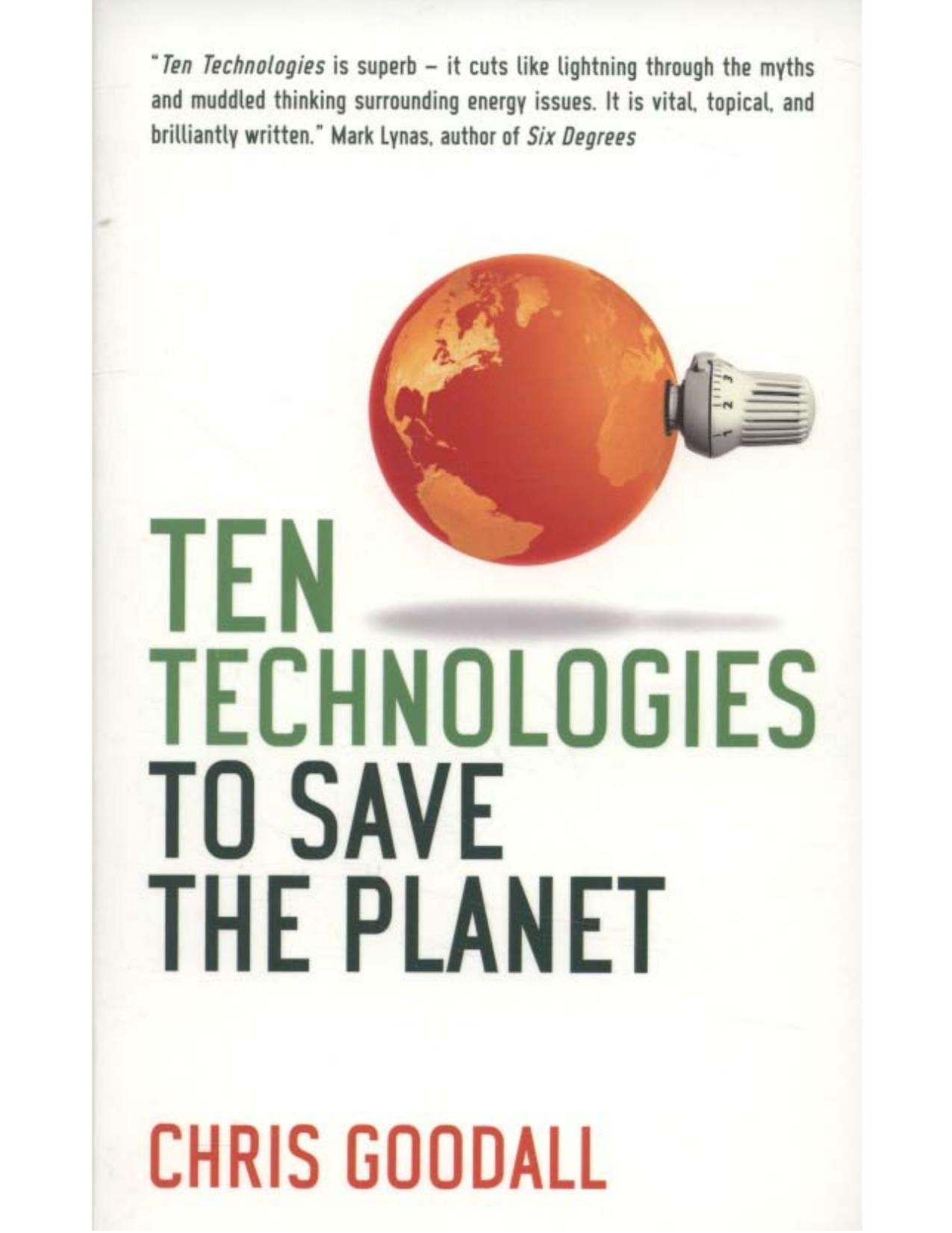Ten Technologies to Save the Planet: Energy Options for a Low-Carbon Future by Chris Goodall

Author:Chris Goodall [Goodall, Chris]
Language: eng
Format: epub, pdf
Tags: General, Technology & Engineering, SCI026000, SCI000000, Environmental, NAT011000
ISBN: 9781553656241
Publisher: Greystone Books
Published: 2010-01-01T07:15:59+00:00
6
ELECTRIC CARS
The inevitable switch to battery propulsion
IN 0CTOBER 2007, the Israeli-born Californian software engineer Shai Agassi announced a plan to accelerate the move to the all-electric car. Agassi is a visionary with a capacity to inspire change. But the scale of the task he took on is breathtaking. At the moment, car batteries for electric-only vehicles are extremely heavy, recharge slowly, have a limited range, and are eye-wateringly expensive. Agassi’s scheme requires carmakers to build a new generation of all-electric cars, probably with no backup engine. His company will then offer to rent batteries to the car owners at a cost that beats the price of gasoline. Owners will recharge the cars at home or at work. For long journeys, they will simply swap the batteries at automated recharging stations conveniently situated on major routes.
Agassi has taken on one of the most important challenges we face: the need to create a world vehicle fleet powered by an alternative to globe-warming petroleum fuels and inefficient internal combustion engines. We can’t know whether his venture will succeed. But he is just one of the many people betting that gasoline and diesel will be replaced by electricity. Battery technology is likely to advance very substantially in the next decade. Price, weight, range, and recharging time will all improve. In contrast, although the price of oil has subsided since the mid-2008 peak of $140 a barrel, oil is likely to get more expensive as time passes. Electricity is now very clearly a less expensive way to run a vehicle and is likely to become even more attractive in the future.
Small numbers of all-electric cars have been around for decades. They are generally slow and have a very limited range. Perhaps 25,000 of these vehicles putter around the suburban streets and retirement communities of California and other places in the U.S. But battery vehicles that look and drive like ordinary cars will be on sale in late 2010, with mass production from manufacturers such as Chevrolet and Nissan slated for 2012. Batteries will need to be recharged with electricity, and at the moment that electricity is most definitely not net-zero. But many of the other advances suggested in this book will substantially reduce the carbon produced when electricity is generated. As time progresses, the advantages of using electricity to drive our cars can only grow.
The modern car is the product of more than a hundred years of evolution. It is extremely reliable, at least compared with its ancestors. Usually comfortable and pleasant to use, it is also much safer than it was even twenty years ago. But a century of improvements hides a surprising fact. The engines that power today’s cars remain inefficient and wasteful. Automobile manufacturers spend enormous sums each year on research and development, but only about a quarter of the energy in gasoline actually gets to the wheels of the car. Over three-quarters is wasted as heat, mostly from the exhaust or through the cooling system. Diesel cars are better but still waste most of the energy in the fuel.
Download
Ten Technologies to Save the Planet: Energy Options for a Low-Carbon Future by Chris Goodall.pdf
This site does not store any files on its server. We only index and link to content provided by other sites. Please contact the content providers to delete copyright contents if any and email us, we'll remove relevant links or contents immediately.
| Automotive | Engineering |
| Transportation |
Whiskies Galore by Ian Buxton(41712)
Introduction to Aircraft Design (Cambridge Aerospace Series) by John P. Fielding(33011)
Small Unmanned Fixed-wing Aircraft Design by Andrew J. Keane Andras Sobester James P. Scanlan & András Sóbester & James P. Scanlan(32678)
Craft Beer for the Homebrewer by Michael Agnew(18076)
Turbulence by E. J. Noyes(7888)
The Complete Stick Figure Physics Tutorials by Allen Sarah(7258)
Kaplan MCAT General Chemistry Review by Kaplan(6814)
The Thirst by Nesbo Jo(6748)
Bad Blood by John Carreyrou(6468)
Modelling of Convective Heat and Mass Transfer in Rotating Flows by Igor V. Shevchuk(6349)
Learning SQL by Alan Beaulieu(6152)
Weapons of Math Destruction by Cathy O'Neil(6077)
Man-made Catastrophes and Risk Information Concealment by Dmitry Chernov & Didier Sornette(5870)
Digital Minimalism by Cal Newport;(5576)
Life 3.0: Being Human in the Age of Artificial Intelligence by Tegmark Max(5398)
iGen by Jean M. Twenge(5298)
Secrets of Antigravity Propulsion: Tesla, UFOs, and Classified Aerospace Technology by Ph.D. Paul A. Laviolette(5232)
Design of Trajectory Optimization Approach for Space Maneuver Vehicle Skip Entry Problems by Runqi Chai & Al Savvaris & Antonios Tsourdos & Senchun Chai(4949)
Electronic Devices & Circuits by Jacob Millman & Christos C. Halkias(4859)
